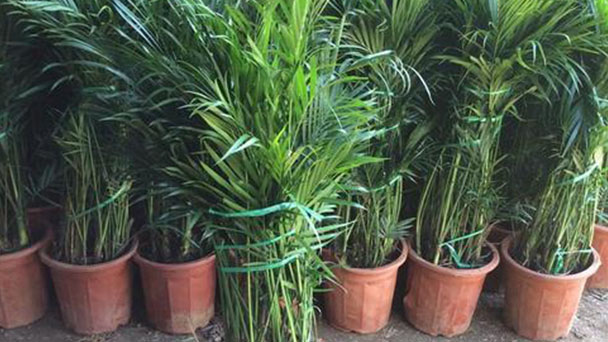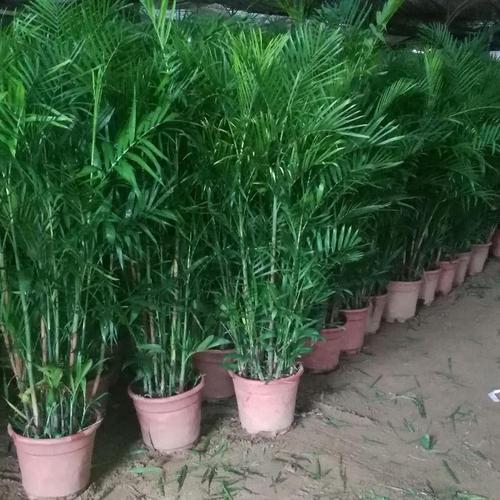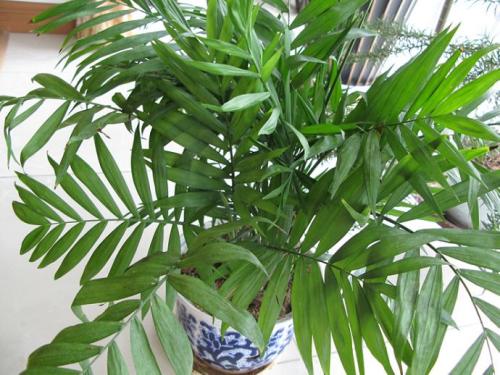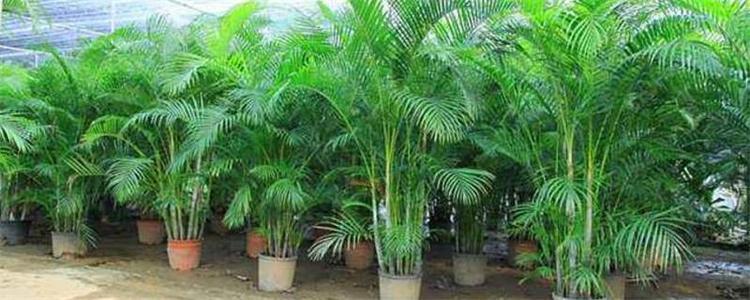Pritchardia gaudichaudii profile
Written by Maggie
Mar 16 2021

Pritchardia Gaudichaudii is an evergreen shrub of camellia genus in the palm family, native to Mexico, Guatemala and other places, mainly distributed in the tropical regions of central and South America, and introduced to the southern region of China with good adaptability. Pritchardia Gaudichaudii is a beautiful plant with dense foliage, bright green leaves and elegant feathers, which can be placed indoors or outdoors for a long time or used in landscaping. It is a popular leaf-viewing plant in the market.
Pritchardia Gaudichaudii picture

Pritchardia Gaudichaudii morphological characteristics
Pritchardia gaudichaudii plant height is 2 ~ 4m, stem erect, slender emerald green, resembling a bamboo node. The stem is 1 ~ 3m high, stem nodes short, hollow, new shoots from underground stolons are drawn, fasciculate, not branched. Leaves are often from the upper middle of the stem, pinnate compound, fully lobed, lobes lanceolate, alternate, dark green, glossy. pritchardia gaudichaudii is dioecious, flowers in fleshy panicles, axillary at middle and upper nodes of stem, pink. Pritchardia Gaudichaudii is easy to flower and seed, the fruit is a berry, globular, yellow. The flowering and fruiting period can reach 2 ~ 3 months.
Hawaiian coconut likes high temperature and humidity. It is shade tolerant and afraid of direct sunlight.
Pritchardia Gaudichaudii potted pot can be directly used in white plastic pot (or with devious and covered white plastic pot). It is advisable to use loose, well-ventilated and water-permeable substrate rich in humus. Generally, leaf-rotting soil, garden soil and river sand can be mixed in the same amount with a small amount of decayed organic fertilizer to make it as the culture substrate. In the growing season from March to October, liquid fertilizer or granular compound fertilizer is applied every 1 to 2 weeks to promote leaf growth and leaf color. Change pots every 2 to 3 years depending on plant growth. Topdressing can be applied with mature cake fertilizer (such as sesame oil cake, bean cake, etc.), or with the baked cake water fertilizer, and we can also use compound fertilizer, etc. Fertilize before and after flower, and pay attention to water supply during flowering.
Although Pritchardia gaudichaudii is a tropical plant, it is one of the cold-resistant varieties in the palmaceae family. After years of introduction, domestication and cultivation, Pritchardia Gaudichaudii has been able to basically adapt to the climatic conditions in the central and southern regions of Fujian. It will not be affected by cold even if it is covered by plastic film for frost prevention in the short-term temperature of -5 ℃~0℃. Pritchardia gaudichaudii generally stops growing when the temperature is lower than 10 ℃, and the best growth temperature is 15℃~32℃. In the Fuzhou area, buds and leaves can still come out under the shade in summer.
2. Illumination: The Pritchardia gaudichaudii has a strong shade tolerance and is a rare indoor ornamental plant, suitable for long-term indoor display. In the process of cultivation, the leaves should be shaded properly in summer to avoid the burning of strong light at noon. The leaves should be planted under the shade of large trees to keep the leaves green and bright.
Pritchardia Gaudichaudii may develop brown spots and downy mildew under high temperature and humidity conditions, which can be prevented by microbicides such as carbendazine or Tobuzin 1000x solution.
Pritchardia Gaudichaudii distribution range
Pritchardia gaudichaudii is native to Mexico and Guatemala and is mainly distributed in tropical regions of Central and South America. Taiwan province of China has a batch cultivation, becoming one of the main production areas.

Pritchardia Gaudichaudii propagation method
Cultivation substrate
Pritchardia Gaudichaudii has a developed root system and strong water absorption, so it does not require much for cultivation substrate. Generally, sandy loam and garden soil can be planted, while productive cultivation can be planted on mountain slopes and farmland. If potted, use garden soil mixed with 1/3 leaf rot soil.
Sewage sludge management
According to the characteristics of Pritchardia Gaudichaudii with developed roots and strong water adsorption, water more in summer, preferably supplemented by foliar spraying to enhance leaf glossiness. When the temperature is below 15 ℃, water less and stop foliar spraying. When temperature is 10 ℃ or less Pritchardia gaudichaudii basic stops growing, the physiological function decreases, water should be less as far as possible at this time, to improve the cold resistance ability. Pritchardia gaudichaudii grows more quickly, It can reach 1.0 ~ 1. 5 meters after three years of sowing seeds, so the larger demand for nutrients, between may and November each year, a month can be 1 ~ 2 times fertilizer, farm manure or compound fertilizer, or a potted plant, combined with the spraying foliar fertilizer., in order to make the leaf color more green luster.
Pritchardia gaudichaudii is propagated by seed or plant separation. The seeds are generally ripe in autumn and can be sown at any time. They are first sown in sand beds and then transplanted after emergence. It can be carried out from May to September every year. After October, when the weather becomes cooler, it is not suitable to separate plants again.
Pritchardia gaudichaudii main value
Pritchardia gaudichaudii can maintain indoor humidity at 40 to 60 percent. It also has the effect of removing benzene, trichloroethylene, formaldehyde and other volatile organic compounds. Pritchardia gaudichaudii can be placed in the decorated room.
Pritchardia Gaudichaudii, with its dense, glossy green leaves and elegant pinnate feathers, has become a newcomer to indoor leaf-watching plants, offering a dignified, elegant and delicate beauty. It is very resistant to negative, very suitable for indoor cultivation and ornamental, can be used in the living room, study, meeting room, office and other green decoration. They can also be used as gift plants.

Latest Updated
- Benefits of Bugleweed - 7 Science-backed Health Benefits
- Bugleweed Dangers & Side Effects - Is It Poisonous?
- How to Plant Evergreen Trees - What You Should Know
- When to Plant Evergreens - Grow Guide for Evergreen Trees
- 12 Wonderful Evergreen Shrubs for Your Garden
- 12 Popular Evergreen Plants with Pictures for Beginners
- When And How To Prune A Lilac Bush Like a Pro
- How to Grow & Care for Lilac Vine (Hardenbergia Violacea)
- Japanese Lilac Tree (Syringa Reticulata) Care & Propagation Guide
- Shumard Oak Pros and Cons - What to Know
Popular Articles
- Winter maintenance of Antirrhinum Majus
- How to Grow Terminalia Mantaly Tree
- How to Grow and Care for Crossostephium Chinense
- How to grow Antirrhinum Majus in spring
- Peristeria Elata (Dove Orchid) Profile: Info & Care Guide
- Underwatered Snake Plant (Sansevieria Trifasciata) - Signs And How To Fix
- How to Care for Brazilian Jasmine Plant (Mandevilla Sanderi)
- How to Grow & Care for Graptopetalum Purple Delight in Summer
- Rosa Chinensis (China Rose): Plant Growing & Care Tips
- How to Care for Baby Sun Rose (Aptenia Cordifolia)